Marinated Quail Eggs are often served at izakaya (Japanese-style tavern) as a small appetiser as soon as you are seated. Marinated in sweet soy-flavoured sauce, they are surprisingly tasty and also surprisingly easy to make.
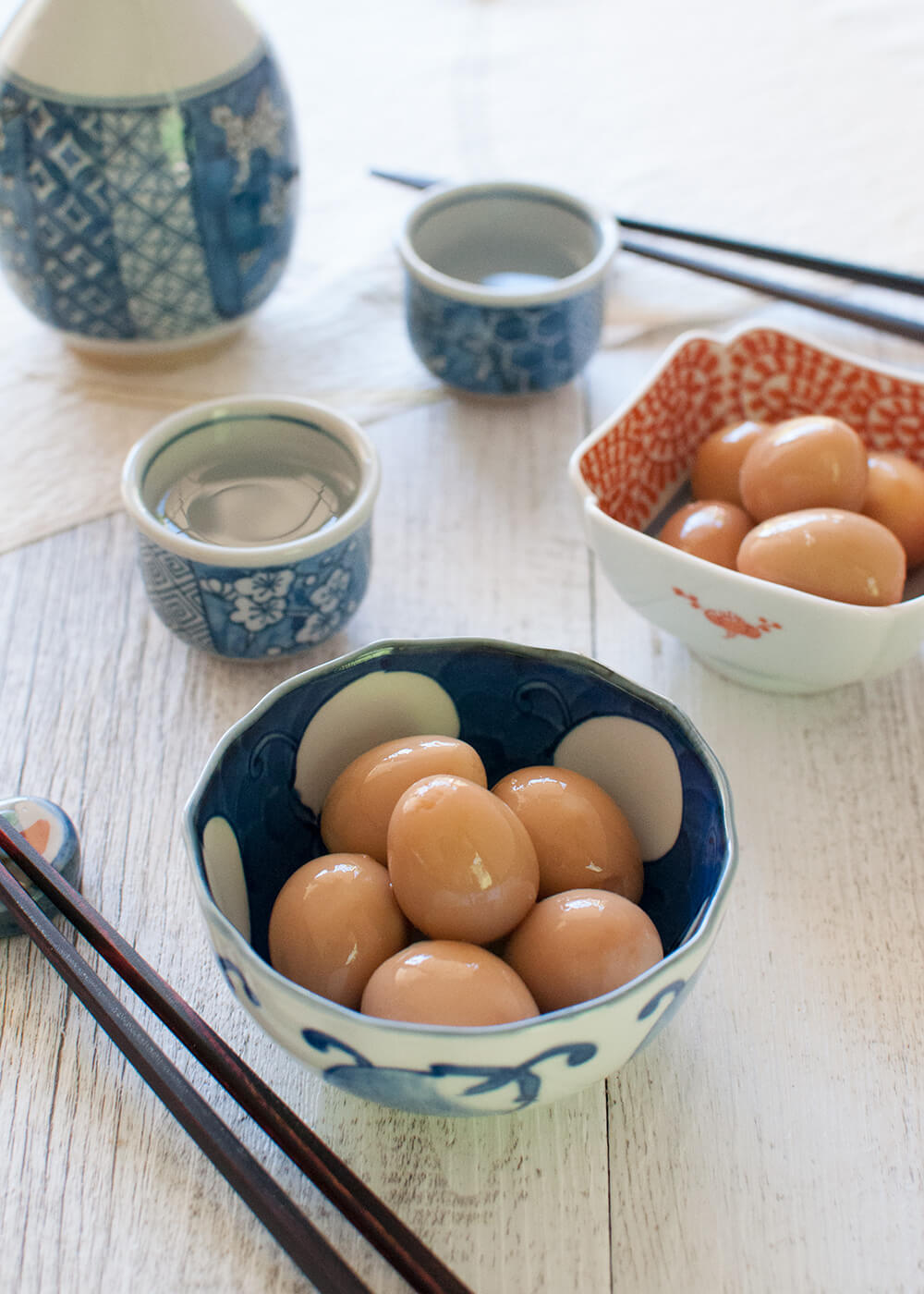
When my friend and I travelled to Japan a couple of years ago, we stayed in Asakusa, near Sensōji temple for the first week. I took my friend to an izakaya near our hotel on the first evening and marinated quail eggs were what we were served immediately. My friend had never tried marinated eggs before but she certainly loved them.
I said ‘appetiser’ but I have to explain a little more about this custom associated with izakaya.
When you are seated in the izakaya, you will be served with a small bowl or plate of appetiser even before ordering. This is called ‘otōshi’ (お通し) or ‘tsukidashi’ (突き出し). It was originally meant to be a small dish that customers could nibble while waiting for the dishes they ordered. It was to show the izakaya’s hospitality to their customers.
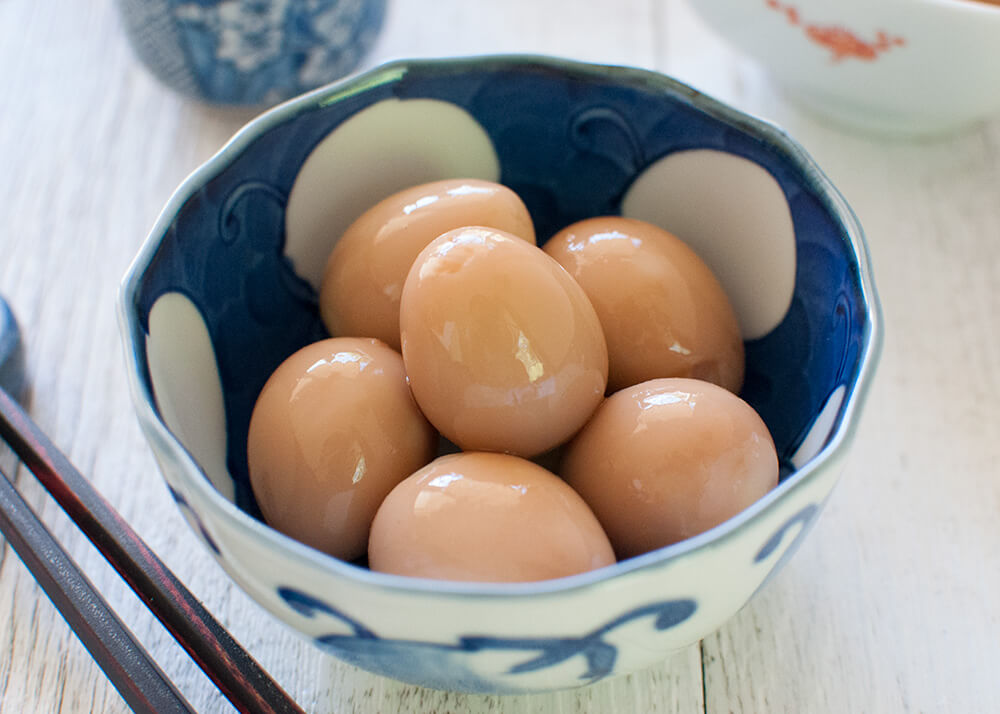
However, otōshi is now part of a service charge and you pay for it. The reason behind it is understandable. Izakaya is a place that offers cheap sake/beer and dishes. There are no such rules against just drinking but if a customer orders one drink and stays there for a long time without even ordering a dish, it will not be financially viable for izakaya. Not that there are many customers like that, but to mitigate risk they started charging for otōshi.
Such custom is not always accepted by overseas visiters in particular. They sometimes argue that they thought it was a free dish and did not even order it, therefore they should not have to pay for it. If the foreigners are explained about otōshi in advance, I guess such an argument could be avoided.
I noticed recently that some izakaya do not serve otōshi if the customers are not Japanese. I once went to an izakaya with my kids and a couple of Aussies. There, we did not get otōshi while other Japanese customers did. I guess they thought we were not Japanese because we were mostly speaking English.
The number of travellers from overseas to Japan is increasing every year. I think that there should be clear explanations about otōshi and the customer should have an option to take it or not. But I will probably never refuse to have it. It’s kind of fun because you don’t know what you will get, and it is part of the cultural experience.
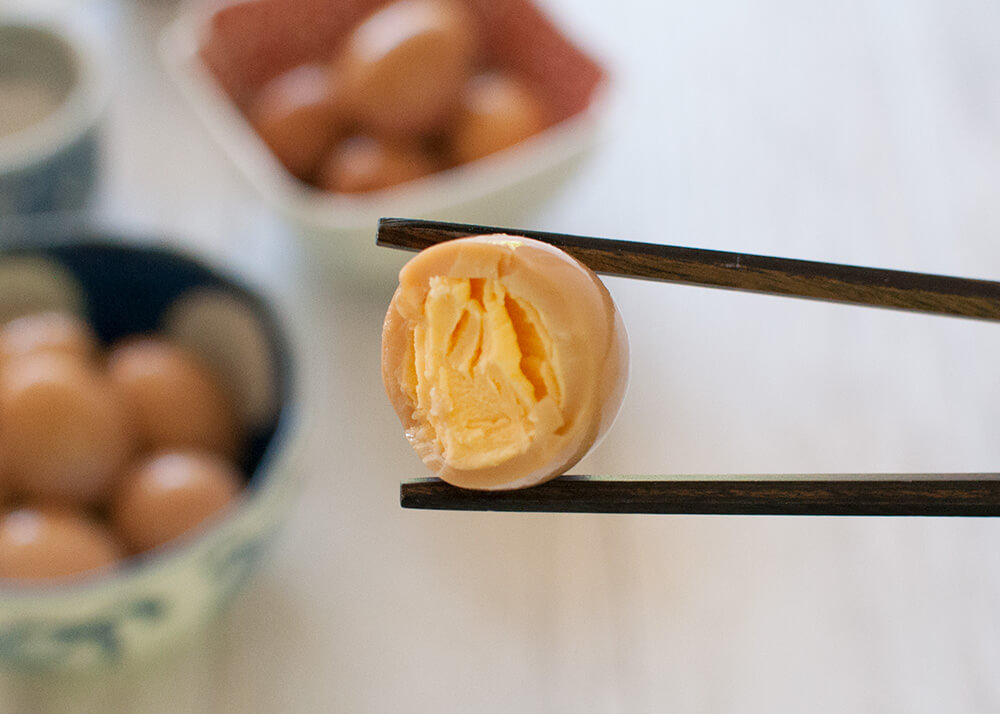
Otōshi can be any small dish. It could be pickled vegetables, simmered vegetables and/or meat/fish, a small amount of edamame, etc. They are usually dishes that can be cooked or prepared in a large quantity in advance and can be served in a simple way.
Today’s dish fits these characteristics of otōshi perfectly. It is so simple to make, can be made ahead and serving is simple.
Quail eggs are such tiny eggs that you don’t need to keep boiling them to cook. Start with cold water and once it has reached a boil, cook for 2 minutes, then turn off the heat and cook in the hot water for another couple of minutes. I find that peeling quail eggs is much easier than chicken eggs. The shell is so thin with strong membrane that long strips can come off even if the shells are broken everywhere.
The marinade is a simple mixture of dashi stock, soy sauce, mirin and sake. Some recipes don’t use sake or dashi stock. But I think that the addition of dashi stock makes the flavour more delicate.
When marinating, make sure that the entire egg is submerged in the marinade, otherwise the egg will have white patches. For this reason, I use a little jar just to fit in the boiled quail eggs and the marinade. I even place a little plastic lid on the surface of the marinade so that the egg at the top is below the surface of the marinade.
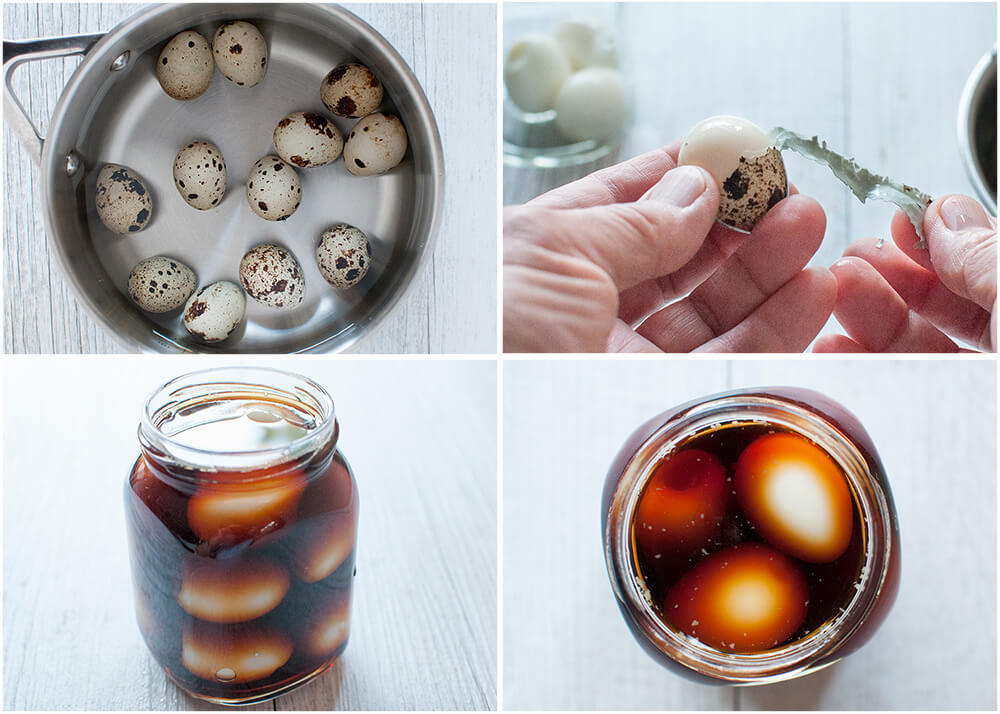
I served Marinated Quail Eggs to my golf friends on Easter Sunday after playing golf. We played near my home so I invited them to have drinks and nibbles at my place. I don’t buy chocolate Easter eggs any more but I wanted to give them eggs, so I decided to serve rather savoury Easter eggs. My friends said they were tasty, so I decided to post this recipe even though it’s so simple.
You can keep Marinated Quail Eggs in the fridge for 5 days or so. If you make too many, you can halve the eggs and toss in salad, noodles or add as a decoration to a main dish.
Yumiko![]()
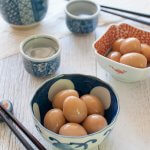
These marinated quail eggs are often served at izakaya (Japanese-style tavern) as a small appetiser as soon as you are seated. Marinated in sweet soy-flavoured sauce, they are surprisingly tasty. And also surprisingly easy to make.
Total time does not include time to marinate.
- 12 quail eggs
- 3 tbsp dashi stock
- 2 tbsp soy sauce
- 2 tbsp mirin
- 1 tbsp sake
-
Place the quail eggs in a saucepan large enough to have eggs in a single layer. Add water to cover the eggs and bring it to a boil over medium high heat. (note 1)
-
Boil for 2 minutes (note 1), then turn the heat off. Place a lid on and cook in the hot water for another 2-3 minutes.
-
Drain and add cold water to cool the eggs down. When the eggs cool down, peel the shells (note 2).
-
Mix the Marinade ingredients in a bowl.
-
In a small jar or air-tight container with a volume of minimum 300ml (10.1oz)(note 3), place the eggs and add the marinade. Ensure that all eggs are covered in the marinade.
-
Place a lid on and keep them in the fridge for overnight up to 2 days.
-
Take the eggs out of the marinade and serve them in a small bowl.
1. If you want the egg yolk to be set in the centre of the egg, roll the eggs in the water regularly using chopsticks or a fork while the water is getting boiled and for the first 1 minute of boiling the eggs.
2. To peel: Shake the saucepan with the eggs in it vigorously so that the eggs hit against each other as well as the side of the saucepan. I also add water to the saucepan. Start peeling from the round end of the egg.
3. The eggs need to be completely covered in the marinade. To make sure that the eggs do not appear above the surface of the marinade, I placed a tiny round plastic lid which fits inside the jar.
Because the amount of marinade is just enough to cover the eggs, it is the best to use a round jar. My jar is a round (almost) jar of about 7cm diameter and 9cm tall. A slightly wider jar is OK, and a taller jar is fine too.
You can use an air tight small container too. It is also possible to use a zip lock bag to marinate the eggs. But in this case, you need to shake the bag several times while marinating so that there will be no white patches.
4. The leftover marinade can be reused for another batch of eggs to marinate. Alternatively, it can be used as part of the simmering sauce to cook vegetables as it contains all the typical Japanese seasonings.
Hi! What kind of vegetables do you recommend simmering in the leftover marinade? I’m going to have quite a lot since I tripled the recipe for three dozen eggs!
Hi RC, 3 dozen eggs! You can simmer vegetables, combination of meat and vegetables, or even fish using the leftover marinade. If you search ‘simmered’ on my blog site, you will see many simmered dishes. But you will need to add more dashi stock for most simmering dishes, and you may adjust sweetness in some cases based on the recipe that you will be using. You don’t need to worry too much about the proportion of cooking sake.
I hope you find a good dish to reuse the marinade.
Trying this out with our fresh quail eggs, I am so hyped! Arigatou gozaimasu Yumiko-san!
Hi Zae, douitashimashite. You have fresh quail eggs? Lucky you!
Yep! We raise quail on my families small farm. They are used to train hunting dogs. Gently might I add. Just writing back though, the Izakaya Style Marinated Quail Eggs was a huge success with the family!
That’s fantastic!
Hi ,
I can’t find mirin in my local supermarket.Is it ok to substitute with Hon mirin?is it safe for children to consume as it contains alchohol.Thank you for ur sharing
Hi VAL, Hon mirin is real mirin so it’s not even a substitute. But hon mirin contains 14% alcohol unlike cooking mirin which is 1% alcohol. The amount of mirin required in this recipe is not a lot and in Japan, kids would eat these eggs.
But if you are concerned, I would suggest that you boil mirin and let the alcohol evaporate so that amount of alcohol reduces, then use it.
Hi Yumiko,
Thanks so much for the explanation.